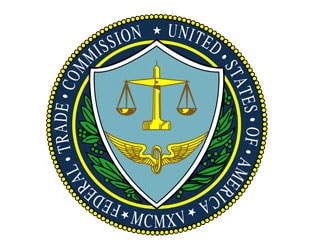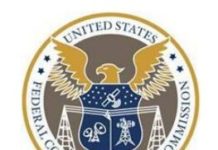Updated at 6:15am PT
LAS VEGAS — In May 2018, the FCC at its monthly Open Meeting — held without the presence of outgoing Democratic Commissioner Mignon Clyburn — issued an Notice of Proposed Rulemaking (NPRM) that allowed the public to comment on proposed changes that would streamline the process for filing an FM translator interference complaint, and the remediation procedures used by the Commission to resolve such an issue.
One year later, the now full-bodied FCC is ready to vote on the matter.
In a wide-ranging address delivered late Tuesday (4/9) at the NAB Show, Chairman Ajit Pai revealed that “it’s time to take our ideas from the drawing board to the scoreboard.”
As such, Pai on Tuesday circulated to all Commissioners a draft order with new FM interference rules, and the five FCC decision-makers will vote on it at its May Open Meeting, scheduled for May 9 at 10:30am Eastern.
While the May Open Meeting agenda is still forthcoming, Pai said the draft order incorporates many of the proposals supported by NAB, such as streamlining interference remediation procedures, clarifying listener complaint requirements, and making it easier for translators causing interference to change channels.
The latter is perhaps the biggest headline to come out of the proposal, with the owners of FM translators are poised to benefit. At present, any claim of interference by a group of listeners that is proven in tests to be accurate automatically gives a full-power station the edge, and requires the translator to shut down — rather than seek another dial position or alternative remedies.
Said Pai, “I believe that it’ll make the interference resolution process less frustrating for full-service stations, translators, listeners, everyone.”
This includes the University of Southern California, which is waging war against a new FM translator in San Francisco at 104.9 MHz, the same frequency as its Class A KXSC-FM 104.9 in Sunnyvale, to the south in Silicon Valley. As RBR+TVBR first reported April 1, USC — which operates KXSC as part of a network of station branded as KDFC — has been rallying listeners to “restore interference-free reception” to KXSC. The station has even posted a downloadable one-page “Interference Complaint” to KDFC.com for listeners who have trouble picking up broadcasts via this signal.
News of the May vote came as Pai noted the FCC’s AM revitalization efforts were going well. Under the Commission’s AM Radio Revitalization Initiative, the FCC granted AM stations 1,707 construction permits for new FM translators — roughly 37% of all AM stations in the United States. At least 459 have already completed construction and are on the air. “This is helping broadcasters improve their programming, expand their listenership, and stabilize their financial position, as broadcasters have told me everywhere from big cities to small-town Marysville, Kansas,” Pai said.
But, he admitted, with this success has come an uptick in interference complaints from primary FM stations due to the increasing number of translators on the air.
Translators are “secondary stations,” and as such they are required to eliminate any interference — or sign off the air.
“Due to the success of the AM revitalization proceeding and the resulting substantial increase in translator licenses, the process for resolving FM translator interference complaints has become more important,” the Commission noted in its May 2018 NPRM. ” As a result, this is an appropriate time for the Commission to examine how to streamline and expedite the complaint resolution process.”
The NPRM proposes the following:
- If interference is shown to, or from, any other station, FM translators should have greater flexibility to move to another available frequency — rather than simply sign off the air
- A minimum of six complaints should be required to support an interference claim — establishing a burden of proof on full-power stations
- Revised rules, needed to clarify and standardize complaint requirements
- Proposed technical criteria, used to assess actual and predicted interference
- An outer distance limit, created beyond which interference complaints would not be actionable.
The latter proposal is intriguing, as this could negate an out-of-market station from alleging interference from a co-channel translator — thus rendering KDFC’s argument moot.
Then, there’s the fight against BNPFT-20180503ACB, a new FM translator at 100.1 MHz in Newburgh, N.Y. As RBR+TVBR reported on August 1, 2018, CHET-5 Broadcasting’s WDST-FM 100.1 in Woodstock, N.Y. is fighting to stop the co-channel FM translator from signing on 45 miles to the south. The translator is also a first-adjacent to iHeartMedia’s Top 40 WHTZ-FM “Z100,” which can be heard in-car across the area as of today.
Then, there’s the long-running and now-concluded tussle between Tom Birch’s Lakes Media and Arohi Media in the Raleigh-Durham market. In November 2018, after months of frustration, thousands of dollars in legal and engineering bills and difficulty in reaching listeners across four counties in North Carolina’s Triangle region, Birch — an individual known for many years as the founder of radio industry research firm Birch/Scarborough Corp. — could finally rejoice.
FM translator W234AR was silenced — this time, for good.
The facility, owned by Arohi Media, shared the same dial position as Lakes’ Class C3 WLUS-FM 98.3, licensed to Clarksville, Va. For roughly two years, Lakes Media argued that the approval of W234AR by the FCC was flawed. While WLUS’s “fringe signal” as shown in Radio-Locator.com as encompassing all of Durham and much of neighboring Raleigh, to the east, WLUS’s “distant” signal is just to the north of Arohi’s translator.
The result had been a saga that spanned 26 months and provided a litmus test of sorts to LPFM and translator supporters who seek local, community voices and believe “rimshot” or out-of-market signals should be used to deliver what larger corporate-owned stations don’t.
The May vote could swing such scenarios in the favor of the FM translator owner. But, the FCC hopes that it will not come at any expense — or loss of signal — to a full-power station.
“These proposed changes are designed to provide greater certainty to full-power stations regarding complaint requirements, limit contentious factual disputes and ensure prompt and consistent relief from actual translator interference,” the NPRM says.
Chairman Pai and Commissioners O’Rielly, Carr, and Rosenworcel approved the NPRM, with O’Rielly and Carr issuing separate statements. Thus, there is likely to be unanimity in the May vote on “MB Docket No. 18-119,” formally known as Amendment of Part 74 of the Commission’s Rules Regarding FM Translator Interference.
It was presented in May 2018 as the final item retiring Audio Division Chief Peter Doyle presented to the Commission, concluding 23 years at the Commission and nearly 17 years in his most recent role.
— Ed Ryan contributed to this story from Las Vegas





